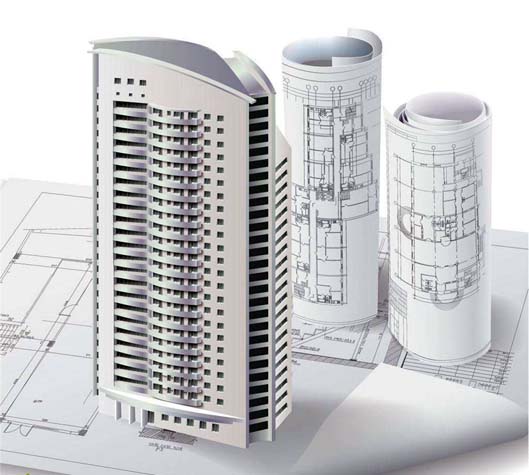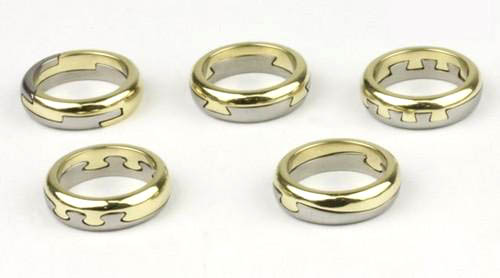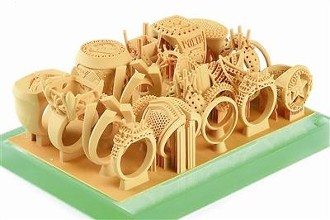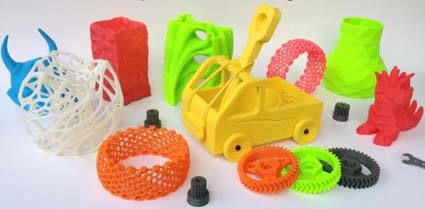The Use of 3D Printers
The use of 3D printer, which features can be achieved?
The role that 3D printing can play, according to the product design and development process, is:
Not only 3D printing can quickly create prototypes, From the initial conceptual design to the final product manufacturing, 3D printing has a transformative advantage at every stage of product design and manufacturing.

With the progress of product design and development, they will use 3D printing for design communication and prototyping production of hand, design verification, testing and assembly propaganda show, Many companies in the early stages of product design will use 3D printing equipment to quickly make enough models for evaluation, which not only saves time but also reduces design flaws. With the development of product design and R&D, they will use 3D printing to produce prototypes for design communication, design verification, assembly testing, and promotional display.
To achieve the goal of improving product functionality, reducing production costs, improving quality, and increasing market acceptance. At the trial stage of the product Low-Volume, 3D printing provides the best solution for rapid proofing. The 3D printed samples can be used for promotional display, market research, trial sales, and so on. In the mass production segment, more and more companies have already adopted 3D printing methods to speed up the delivery cycle, reduce the price of personalized customization, improve the quality of product delivery, and increase production efficiency.
The role that 3D printing can play, according to different application industries:
In recent years, 3D printing technology has developed rapidly. By combining with manufacturing methods such as numerical control processing, casting, cold metal spraying, and silicone molds, this technology has become an effective means for the manufacture of modern models, molds, and parts. It has been applied in aerospace, automobile and motorcycle, home appliances, biomedicine, and cultural and creative fields. It also occupies a unique position in such fields as engineering and teaching research. Specific application areas include:
1, industrial manufacturing:
Product concept design, prototype production, product review, function verification; Produce a prototype of the mold or directly print the mold and print the product directly. Conceptual products such as 3D-printed small unmanned aerial vehicles and small cars have been introduced. The 3D printed home appliance model is also used in corporate promotion and marketing activities.
2. Cultural creativity and digital entertainment: Complex shapes and structures, special materials for artistic expression vectors. The sci-fi movie "Avatar" uses 3D printing to create some characters and props. The 3D-printed violin is close to the level of craftsmanship;
3. Aerospace, defense and military: Direct manufacturing of parts, mechanisms and components with complex shapes, sizes, and special properties;
4. Biomedical: Artificial bones, teeth, hearing aids, artificial limbs, etc.;
5, consumer products: Jewelry, clothing, footwear, toys, DIY creative works of design and manufacturing;
6. Construction Engineering: Building model experiment and effect display, construction engineering and construction (AEC) simulation;
7. Education: Model validation scientific hypothesis, for experiments in different disciplines, teaching. In some secondary schools, colleges and military colleges in North America, 3D printers have been used for teaching and research;
8, personalized customization: Web-based data download, e-commerce personalized print customization services.

What kind of 3D data can be used for 3D printing
Standard data format STL for 3D printing
The STL (Stereo Lithography Interface Specification) format is a common interface format used by current 3D printing/additive manufacturing equipment.Is an interface protocol developed by 3Dsystems in the United States in 1988. It is a 3D graphics file format for 3D printing/additive manufacturing technology services and is now a de facto standard format for 3D printing/additive manufacturing.
The STL format is a simple way to store 3D model information. It approximates a complex digital model as a series of three-dimensional triangular patches. The STL model is a spatially closed, bounded, regular, and uniquely expressed object model with point, line, and surface geometry information that can be input to additive manufacturing equipment for rapid production of physical samples. With the development and application of additive manufacturing technology, the STL file format has also been widely supported by various CAD/CAM software companies. In the field of medicine, natural science and engineering, STL technology has also been widely used. Utilize three-dimensional digital tools such as three-dimensional scanners to perform multi-dimensional 3D scans of physical prototypes. After the preprocessing and optimization of point cloud data, a complete three-dimensional data model of the object is obtained, and the data model is subjected to surface triangle facet processing. Similar to finite element meshing, the CAD model is approximated by many spatial triangular patches. When the triangular patch is small to a certain degree, its similarity can be within the accuracy allowed by the engineering. The data file is called STL file and can be input directly into 3D printing/additive manufacturing equipment for 3D printing/additional manufacturing.
STL File Formatting Affects 3D Printing/Additive Manufacturing Accuracy
In 3D printing, due to the transformation of complex 3D machining into a series of simple 2D machining overlays, Therefore, the forming accuracy mainly depends on the machining accuracy in the two-dimensional (X, Y) plane and the overlaying accuracy in the height (Z) direction. From the perspective of the 3D printer itself, it is possible to control the positional accuracy of movement in the three directions X, Y, and Z to micrometer-level, and thus a workpiece with a relatively high accuracy can be obtained. Therefore, especially when machining complex freeform surfaces and inner cavities, 3D printing/additional manufacturing shows more obvious advantages than conventional processing methods. However, the factors affecting the final accuracy of the workpiece not only have the accuracy of the 3D printer itself, but also have other factors, among which the error caused by the pre-processing of the CAD model is more important. For most additive manufacturing equipment, prior to starting the molding process, the 3D CAD model of the workpiece must be pre-formatted with STL formatting and slicing to obtain a series of cross-sectional profiles. The STL format has become a de facto common standard for the 3D printing industry. In the premise of sufficient computer data processing capabilities, STL formatting should be selected smaller, more triangular facets, making it more close to the surface of the original three-dimensional model, This can reduce the error caused by formatting the STL.

The role that 3D printing can play, according to the product design and development process, is:
Not only 3D printing can quickly create prototypes, From the initial conceptual design to the final product manufacturing, 3D printing has a transformative advantage at every stage of product design and manufacturing.

With the progress of product design and development, they will use 3D printing for design communication and prototyping production of hand, design verification, testing and assembly propaganda show, Many companies in the early stages of product design will use 3D printing equipment to quickly make enough models for evaluation, which not only saves time but also reduces design flaws. With the development of product design and R&D, they will use 3D printing to produce prototypes for design communication, design verification, assembly testing, and promotional display.
To achieve the goal of improving product functionality, reducing production costs, improving quality, and increasing market acceptance. At the trial stage of the product Low-Volume, 3D printing provides the best solution for rapid proofing. The 3D printed samples can be used for promotional display, market research, trial sales, and so on. In the mass production segment, more and more companies have already adopted 3D printing methods to speed up the delivery cycle, reduce the price of personalized customization, improve the quality of product delivery, and increase production efficiency.
The role that 3D printing can play, according to different application industries:
In recent years, 3D printing technology has developed rapidly. By combining with manufacturing methods such as numerical control processing, casting, cold metal spraying, and silicone molds, this technology has become an effective means for the manufacture of modern models, molds, and parts. It has been applied in aerospace, automobile and motorcycle, home appliances, biomedicine, and cultural and creative fields. It also occupies a unique position in such fields as engineering and teaching research. Specific application areas include:
1, industrial manufacturing:
Product concept design, prototype production, product review, function verification; Produce a prototype of the mold or directly print the mold and print the product directly. Conceptual products such as 3D-printed small unmanned aerial vehicles and small cars have been introduced. The 3D printed home appliance model is also used in corporate promotion and marketing activities.
2. Cultural creativity and digital entertainment: Complex shapes and structures, special materials for artistic expression vectors. The sci-fi movie "Avatar" uses 3D printing to create some characters and props. The 3D-printed violin is close to the level of craftsmanship;
3. Aerospace, defense and military: Direct manufacturing of parts, mechanisms and components with complex shapes, sizes, and special properties;
4. Biomedical: Artificial bones, teeth, hearing aids, artificial limbs, etc.;
5, consumer products: Jewelry, clothing, footwear, toys, DIY creative works of design and manufacturing;
6. Construction Engineering: Building model experiment and effect display, construction engineering and construction (AEC) simulation;
7. Education: Model validation scientific hypothesis, for experiments in different disciplines, teaching. In some secondary schools, colleges and military colleges in North America, 3D printers have been used for teaching and research;
8, personalized customization: Web-based data download, e-commerce personalized print customization services.

What kind of 3D data can be used for 3D printing
Standard data format STL for 3D printing

The STL (Stereo Lithography Interface Specification) format is a common interface format used by current 3D printing/additive manufacturing equipment.Is an interface protocol developed by 3Dsystems in the United States in 1988. It is a 3D graphics file format for 3D printing/additive manufacturing technology services and is now a de facto standard format for 3D printing/additive manufacturing.
The STL format is a simple way to store 3D model information. It approximates a complex digital model as a series of three-dimensional triangular patches. The STL model is a spatially closed, bounded, regular, and uniquely expressed object model with point, line, and surface geometry information that can be input to additive manufacturing equipment for rapid production of physical samples. With the development and application of additive manufacturing technology, the STL file format has also been widely supported by various CAD/CAM software companies. In the field of medicine, natural science and engineering, STL technology has also been widely used. Utilize three-dimensional digital tools such as three-dimensional scanners to perform multi-dimensional 3D scans of physical prototypes. After the preprocessing and optimization of point cloud data, a complete three-dimensional data model of the object is obtained, and the data model is subjected to surface triangle facet processing. Similar to finite element meshing, the CAD model is approximated by many spatial triangular patches. When the triangular patch is small to a certain degree, its similarity can be within the accuracy allowed by the engineering. The data file is called STL file and can be input directly into 3D printing/additive manufacturing equipment for 3D printing/additional manufacturing.
STL File Formatting Affects 3D Printing/Additive Manufacturing Accuracy
In 3D printing, due to the transformation of complex 3D machining into a series of simple 2D machining overlays, Therefore, the forming accuracy mainly depends on the machining accuracy in the two-dimensional (X, Y) plane and the overlaying accuracy in the height (Z) direction. From the perspective of the 3D printer itself, it is possible to control the positional accuracy of movement in the three directions X, Y, and Z to micrometer-level, and thus a workpiece with a relatively high accuracy can be obtained. Therefore, especially when machining complex freeform surfaces and inner cavities, 3D printing/additional manufacturing shows more obvious advantages than conventional processing methods. However, the factors affecting the final accuracy of the workpiece not only have the accuracy of the 3D printer itself, but also have other factors, among which the error caused by the pre-processing of the CAD model is more important. For most additive manufacturing equipment, prior to starting the molding process, the 3D CAD model of the workpiece must be pre-formatted with STL formatting and slicing to obtain a series of cross-sectional profiles. The STL format has become a de facto common standard for the 3D printing industry. In the premise of sufficient computer data processing capabilities, STL formatting should be selected smaller, more triangular facets, making it more close to the surface of the original three-dimensional model, This can reduce the error caused by formatting the STL.






